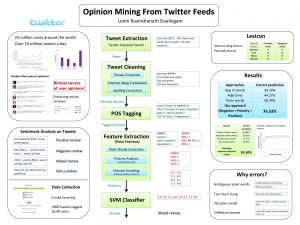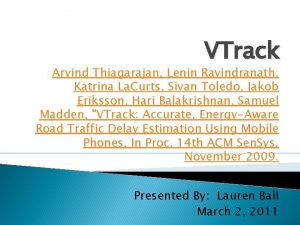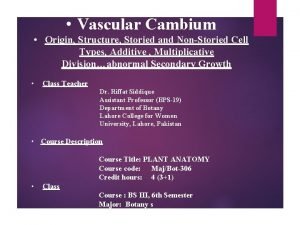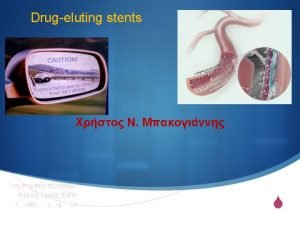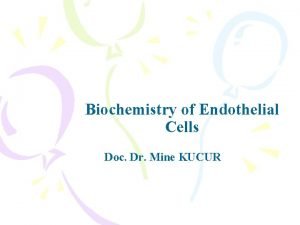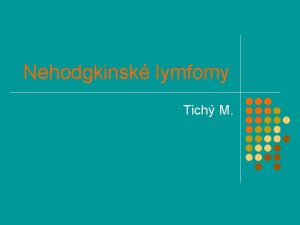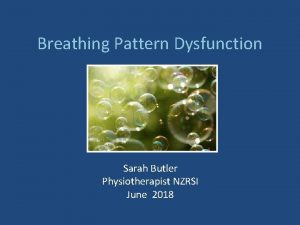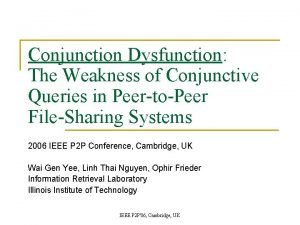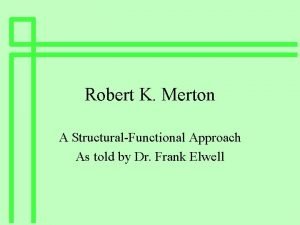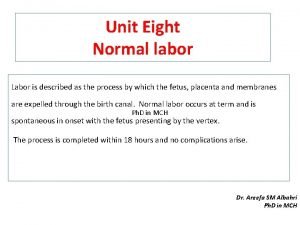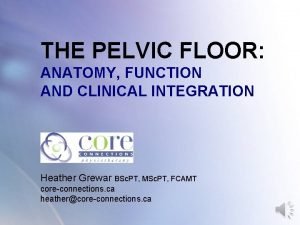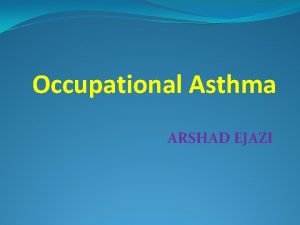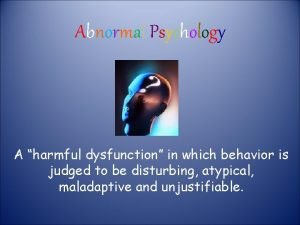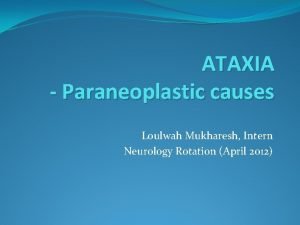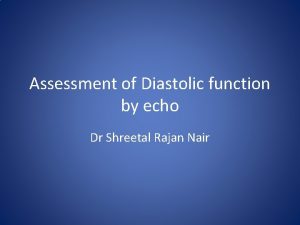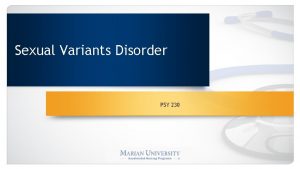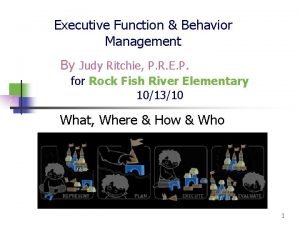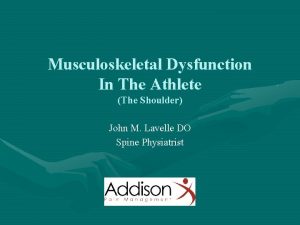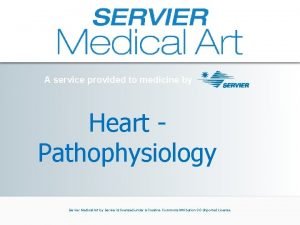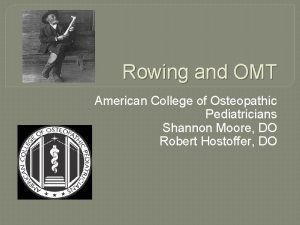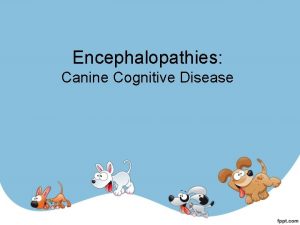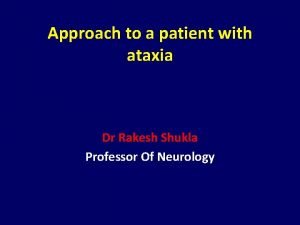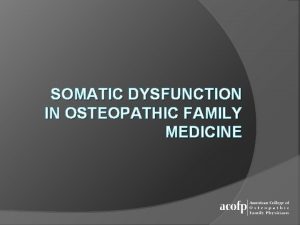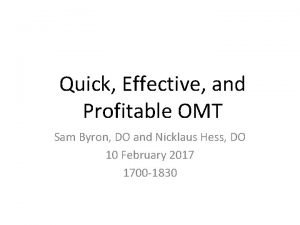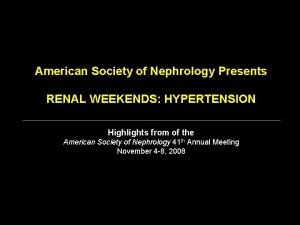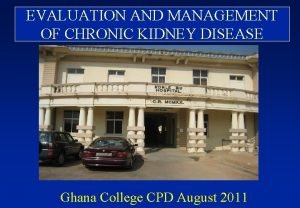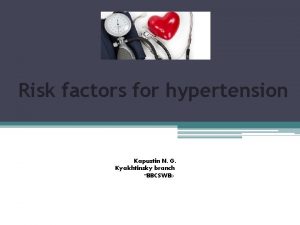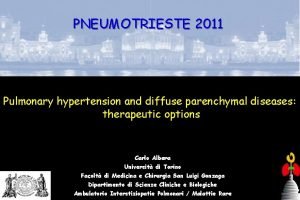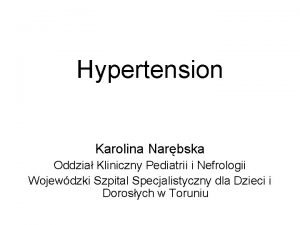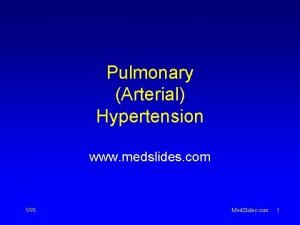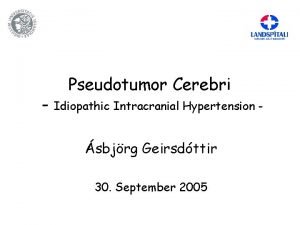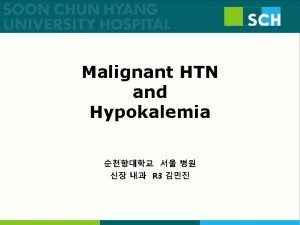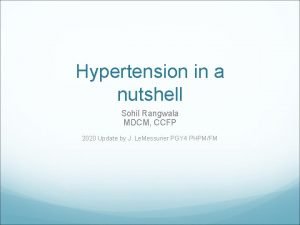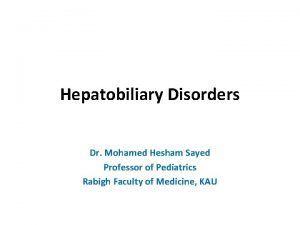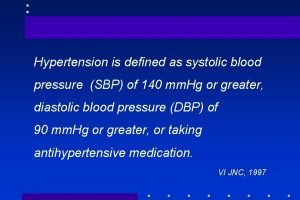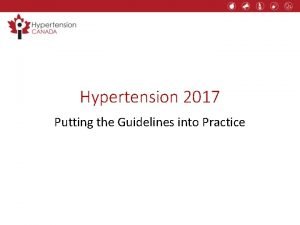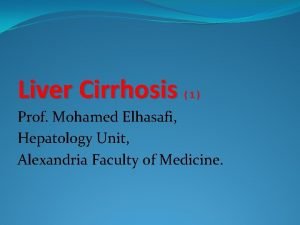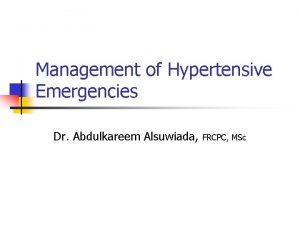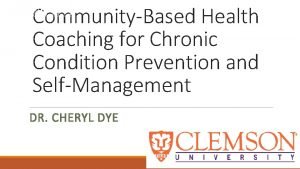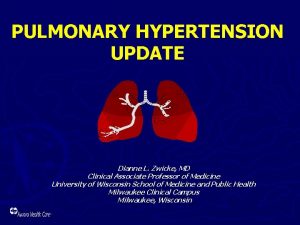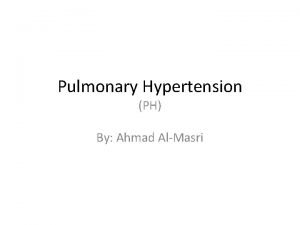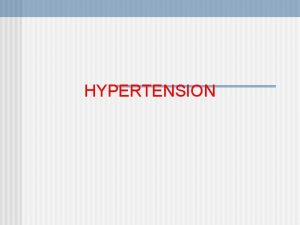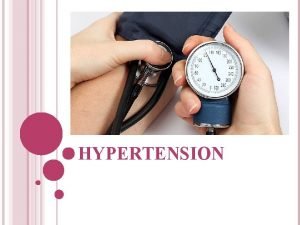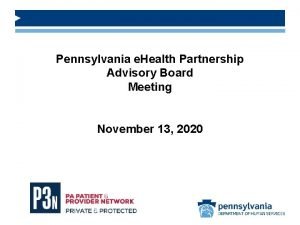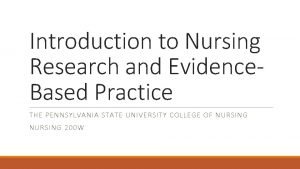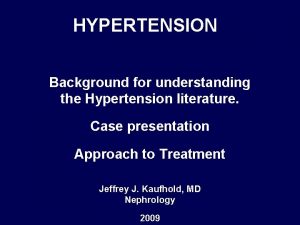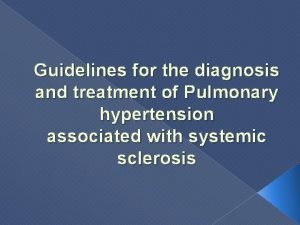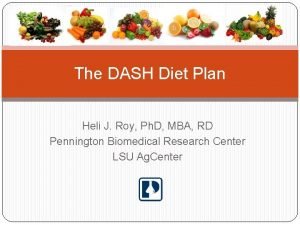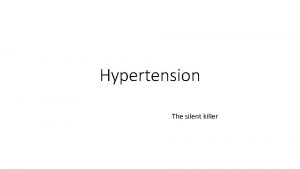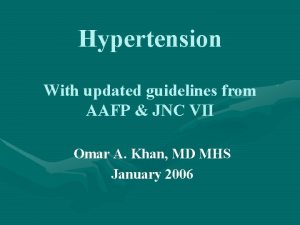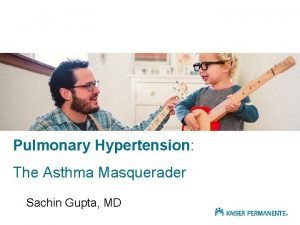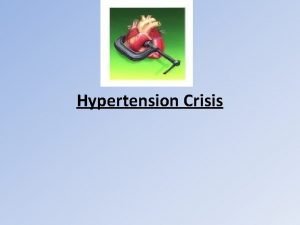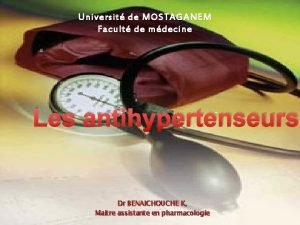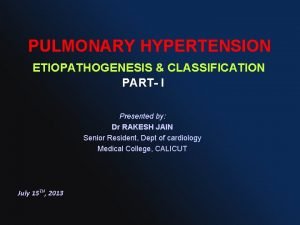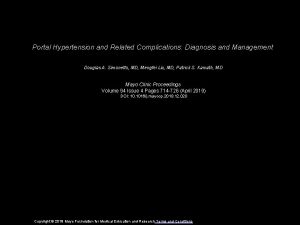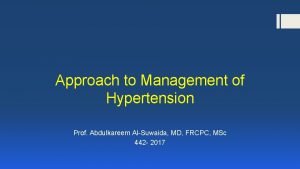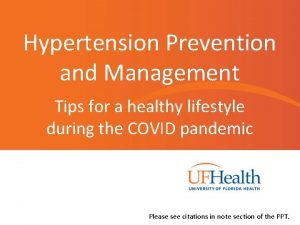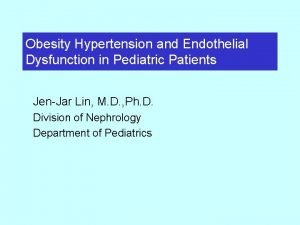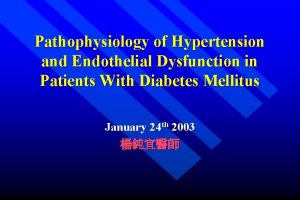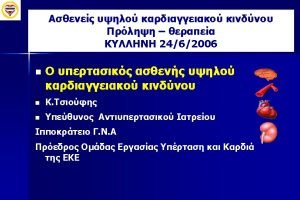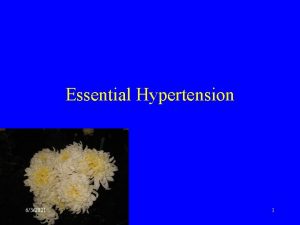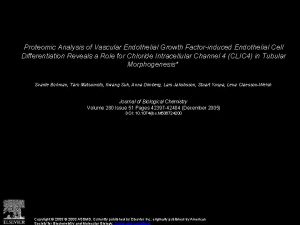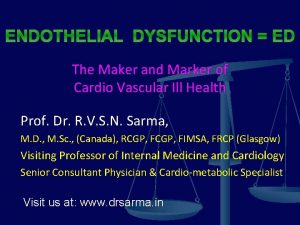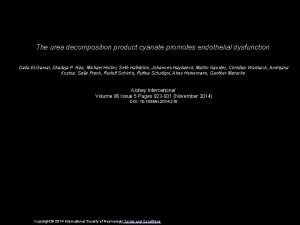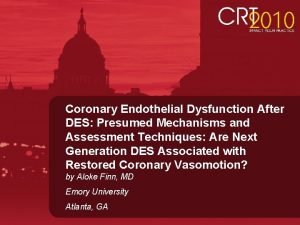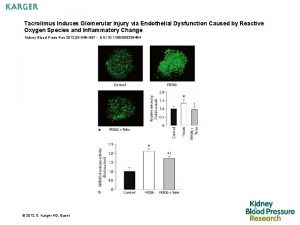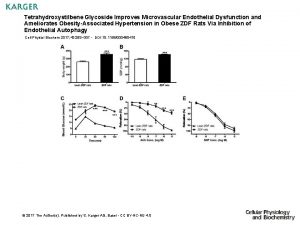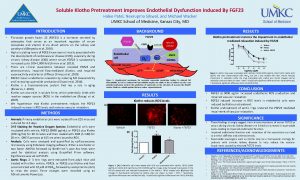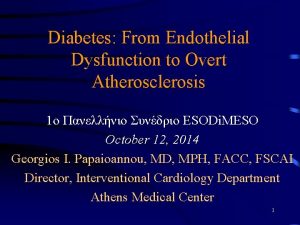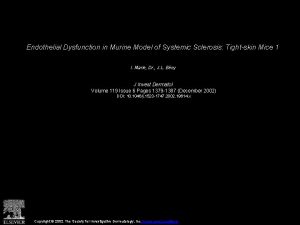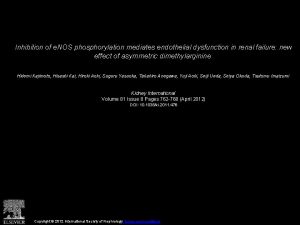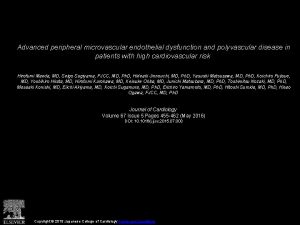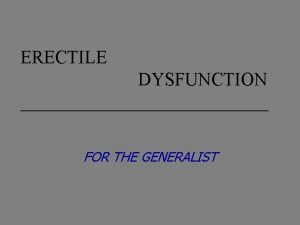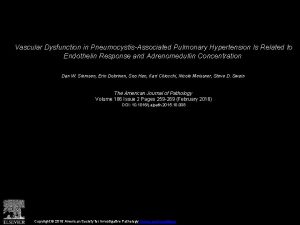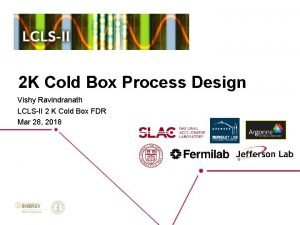Endothelial dysfunction in Hypertension Dr K S Ravindranath





























































![RECENT TRIALS OF ACE(-)/ARBs…. . Ø Ø Ø ALBUMINURIA[ RENNAL, AASK] NEW AF [ RECENT TRIALS OF ACE(-)/ARBs…. . Ø Ø Ø ALBUMINURIA[ RENNAL, AASK] NEW AF [](https://slidetodoc.com/presentation_image_h2/538f7c77192daca90f4e7c501a48afea/image-62.jpg)









- Slides: 71

Endothelial dysfunction in Hypertension. Dr. K. S. Ravindranath MD. DM. DNB Professor of Cardiology Sri Jayadeva Institutue of Cardiology Bangalore

Endothelium: The Largest Living Organ Tunica adventitia Tunica media Tunica intima Endothelium Subendothelial connective tissue Internal elastic membrane Smooth muscle cells Elastic/collagen fibers External elastic membrane

The normal endothelium

Endothelium: The Largest Living Organ 1 ½ kg. 6 tennis courts Semi-permeable

Endothelial nitric oxide production and action Acetyl choline, bradykinin etc Receptors EC Ca 2+-calmodulin arginine SMC High Shear Citruline + NO Soluble guanylate cyclase GTP c. GMP Relaxation, inhibition of proliferation





Control of Vascular Tone


Endothelial Dysfunction- Risk Factors Hypertension Diabetes Insulin resistance Dyslipedemia Oxidative stress & CHF Endothelial dysfunction Vasoconstriction ACS Atherosclerosis Inflammation Thrombosis Plaque rupture Coronary events ISCHEMIC

Pathophysiologic Effects of Angiotensin II Cardiac myocyte Fibroblast Peripheral artery Coronary artery Hypertrophy Hyperplasia Vasoconstriction Apoptosis Collagen synthesis Endothelial dysfunction Cell sliding Fibrosis Hypertrophy Atherosclerosis Decreased compliance Restenosis Increased wall stress Increased O 2 consumption Impaired relaxation Thrombosis

Effects of Aldosterone Cardiac myocyte Fibroblast Peripheral artery Kidney Hypertrophy Hyperplasia Vasoconstriction Potassium loss Norepinephrine release Collagen synthesis Endothelial dysfunction Sodium retention Fibrosis Hypertrophy Decreased compliance

Dysfunctional Endothelium

• Hypertension • Oxidative stress plays determining role in ↓ EDNO • ↓ Tetrahydrobiopterin • • • generation of O 2ˉˉ Arginine deficiency ADMA

Reactive oxygen species and endothelial dysfunction Ang II Reduced NO bioactivity NO ROS Macrophages + Integrins Chemotaxis factors (MCP-1) Endothelium Selectins NO - NO NO Vasodilation - VSMC Werner N, Nickenig G. Eur Heart J. 2003; 5(suppl A): A 9 -A 13 ICAMs

Endothelial dysfunction and HT • NO inactivation – of reactive oxygen species, • ↑production of AT II and endothelin, • ↓ availability of NO precursor L-arginine, • Defect in G-protein dependent intracellular signalling pathway.

ED - Hypertension • Primary or secondary not clear • ED – Normotensive offsprings of HTN patients – Could be primary • ED – Reversed by ACEI , Ca antagonists – could be consequence

• Normotensive offspring of individuals with essential HT have impaired vasodilator response to Ach, suggests a primary abnormality and genetic basis. • Cirulation 1996, 94: 1298 -1303

ED - HTN • Endothelium dependent vasodilation not only operates in large conductace vessels, but • Is also controls dilation in small ( resistance) vessels, • ED - resistant vessels – Micro vascular Dysfunction – Nephropathy – Microalbuminuria • ED - Peripheral arteries - Coronary Macro & Micro circulation - Renal circulation

How to Assess ED • Endothelium-dependent vasodilation – Acetyl choline or post-ischaemic FMD* – Coronary or forearm arteries • Intima-media thickness (IMT) • Microalbuminuria • Plasma markers – ADMA, CRP, adhesion molecules • Clinical diagnosis • flow-mediated dilatation (FMD) • asymmetric dimethylarginine (ADMA)

Serum Markers • • • Endothelin - I, Angiotensin- II, CRP VWF / Ros / Cytokines t-PA PAI-I ICAM VCAM E-Selectin & P Selectin ADMA Endothelial progenitor cells (EPCs)


Brachial Artery Flow-Mediated Vasodilation 3. 6 mm 3. 1 mm Baseline 5 Minutes Blood Pressure Cuff Occlusion – 1 Minute Release Post-Occlusion

Impaired EDNO bioactivity in HT.


Murakami T et al. J Am Coll Cardiol 2001; 37: 294 A CVE’s over 4 Years in 480 Patients with Suspected CAD According to Brachial Artery FMD


Predictors of MACE in symptomatic population with coronary risk factors ( Park et al )

• Negative correlation between the rise of SBP and endothelium dependent vasodilation due to NO/c. GMP pathway • Rather than a benign process, exercise induced HT may predict possible CVS morbidity due to evolving endothelial dysfunction. Yonsei Med J vol 44 no 6 , 2003 • Also seen in white coat hypertension


Correcting Endothelial Dysfunction • • • Risk factor modification ( BP, DM, Smoking) Exercise and weight loss Blockade of the RAS- ACE Θ / ARB LDL reduction, HDL augmentation. PPAR-γ agonists Antioxidants Reducing homocysteine levels Improving insulin sensitivity Lowering CRP L-arginine.


Statins- Myocardial neovascularization EPC EPC Bone Marrow Mobilization (VEGF-R) 1 Hypertension / Dyslipidemia EPC 2 Peripheral blood Endothelial dysfunction Migration e. NO Ischemia 3

Vascular protection • ACEI vs placebo – HOPE – EUROPA


Reduction in oxidative stress with ACE inhibition Tissue ACE activity Ang II p 22 phox rac-1 p 47 phox O 2 – degradation NADPH oxidase ec. SOD O 2 – production NO availability Landmesser U, Drexler H. Eur Heart J. 2003; 5(suppl A): A 3 -A 7.

Endothelial dysfunction and HT • Hypertensive patients with DM have endothelial dysfunction that can be related to microalbuminuria , as well as modified by antihypertensive therapy. » J. Hum. Hyperten 2005

• Effects beyond baseline therapy – Aspirin – Beta-blockers – Lipid-lowering agents – Diuretics – Other antiplatelets – Calcium channel blockers % RR HOPE – Primary outcomes + Ramipril 10 mg * p = 0 0001 p = 0. 005 The Heart Outcomes Prevention Evaluation Study Investigators. N Engl J Med. 2000; 342: 145 -153

HOPE Impact of ramipril on stroke based on baseline BP BMJ 2002; 324: 1 -5


Angiotensin Receptor Blockers Mechanism of Action RENIN Angiotensinogen Other paths AT 1 Receptor Blocker AT 1 Vasoconstriction Angiotensin I ACE ANGIOTENSIN II RECEPTORS Proliferative Action AT 2 Vasodilatation Antiproliferative Action

Improved endothelial function with Losartan but not with atenolol

mm. Hg LIFE study Time ( Months )

ARB in hypertension – LIFE Study Losartan Atenolol Adjusted RR (n=4605) (n=4588) (%) Primary composite 11% 13% -13 0. 021 CV mortality 4% 5% -11 0. 206 Stroke 5% 7% -25 0. 001 MI 4% 4% +7 0. 628 Total mortality 8% 9% -10 0. 128 New-onset DM 6% 8% -15 0. 001 Endpoint p

How Could Losartan Reduce the Risk of Stroke “Beyond Blood Pressure”? Potential Sites of Action Cardiac remodeling/ enlargement Vascular remodeling Endothelial dysfunction Prothrombotic state

Cardiovascular diseases in men according to BP Lancet 2006; 367: 168 -176

TROPHY Trial • 30 to 65 (inclusive) years of age • Not treated for hypertension • First visit BP not exceeding 155/99 mm Hg • Average BP ≤ 139/85 -89 or 130 -139/≤ 89 mm Hg (3 visits) as determined by an automated BP measurement device Julius et al. N Engl J Med 2006

Development of clinical hypertension Cumulative incidence % 1. 0 Placebo 0. 9 Candesartan 0. 8 0. 7 0. 6 0. 5 0. 4 0. 3 0. 2 0. 1 0 0 1 2 Years in study 3 4 191 118 128 85 Numbers of hypertension-free individuals Candesartan Placebo 391 381 356 269 309 184 Julius et al. N Engl J Med 2006

Risk reduction in development of clinical hypertension, candesartan versus placebo 0 -2 years 0 -4 years 0 -10 15. 6 -20 26. 8 9. 6 Relative risk reduction Absolute risk reduction -30 -40 -50 66. 3 -60 -70 % Julius et al. N Engl J Med 2006

Clinical implications 1. Continuous pharmacological treatment of prehypertension not recommended ; long-term safety of this approach has not been demonstrated 2. In TROPHY, the rate of transition from prehypertension to stage 1 hypertension in the placebo group was 15% per year 3. To facilitate early detection of stage 1 hypertension, subjects with prehypertension should be followed closely, preferably at three months intervals Julius et al. N Engl J Med 2006

B-blockers and endothelial function. • Carvedilol which has antioxidant properties may improve endothelial function, • Nebivolol – endothelium dependent dilation of blood vessels via L-ariginine / NO pathway.


Ca channel blockers • Amlodipine appears to ↑ production of NO, • NO response to amlodipine ( 79%) was similar in magnitude to that of ramiprilat. Am J Cardiol. 1999 • Nifedepine – GITS, Lacidipine





• Indeed , simple drugs like aspirin may influence endothelial function in HT, • Recent data- relationship of endothelium to angiogenesis, • Hypertensive patients with DM have endothelial dysfunction that can be related to microalbuminuria , as well as modified by antihypertensive therapy. » J. Hum. Hyperten 2005

• Aldosterone- cardiovascular inflammation, Endothelial dysfunction, fibrosis, • Aldosterone promotes endothelial dysfunction independent of blood pressure, • Most likely mediated by cyclooygenase 2 derived prostacyclin mediated vasoconstriction, • Cyclooxygenase -2 inhibitor could be used to restore endothelial dysfunction ? • Needs further studies in view of other serious side effects of COX-2 Θ
![RECENT TRIALS OF ACEARBs Ø Ø Ø ALBUMINURIA RENNAL AASK NEW AF RECENT TRIALS OF ACE(-)/ARBs…. . Ø Ø Ø ALBUMINURIA[ RENNAL, AASK] NEW AF [](https://slidetodoc.com/presentation_image_h2/538f7c77192daca90f4e7c501a48afea/image-62.jpg)
RECENT TRIALS OF ACE(-)/ARBs…. . Ø Ø Ø ALBUMINURIA[ RENNAL, AASK] NEW AF [ LIFE, TRACE] LV MASS [ LIFE ] NEW ONSET DIABETES, INTIMA MEDIAL THICKNESS, SYSTEMIC INFLAMMATORY MARKERS…

Angiotensin Receptor Blockers Mechanism of Action RENIN Angiotensinogen Other paths AT 1 Receptor Blocker AT 1 Vasoconstriction Angiotensin I ACE ANGIOTENSIN II RECEPTORS Proliferative Action AT 2 Vasodilatation Antiproliferative Action

Normal Arterial Wall Tunica adventitia Tunica media Tunica intima Endothelium Subendothelial connective tissue Internal elastic membrane Smooth muscle cells Elastic/collagen fibers External elastic membrane Astra Zeneca

Regulatory Functions of the Endothelium Normal Dysfunction Vasodilation NO, PGI 2, EDHF, BK, C-NP Vasoconstriction ROS, ET-1, Tx. A 2, A-II, PGH 2 Thrombolysis Thrombosis PAI-1, TF, Tx-A 2 t. PA, Protein C, TF-I, von. WF Platelet Disaggregation Adhesion Molecules NO, PGI 2 CAMs, Selectins Antiproliferation Growth Factors NO, PGI 2, TGF- , Hep ET-1, A-II, PDGF, b. FGF, ILGF, Interleukins Inflammation Lipolysis LPL ROS, NF- B Vogel R


HOPE Benefits of ramipril were observed among pts who were already taking a number of effective treatments, such as aspirin, beta-blockers, and lipid lowering agents, indicating that the ACE inhibition offers an additional approach to the prevention of atherothrombotic complications N Engl J Med 2000; 342: 145 -153

Correcting Endothelial Dysfunction • • • Risk factor modification ( BP, DM, Smoking) Exercise and weight loss Blockade of the RAS- ACE Θ / ARB LDL reduction, HDL augmentation. PPAR-γ agonists Antioxidants Reducing homocysteine levels Improving insulin sensitivity Lowering CRP L-arginine.

Endothelium: The Largest Living Organ • 1 ½ kg. • 6 tennis courts • Semipermeable 73


Proposed pro-atherogenic mechanisms of reactive oxygen species Angiotensin II Vascular ROS production Endothelial dysfunction (Reduced NO availability) LDL oxidation Pro-inflammatory gene expression (VCAM-1, MCP-1) Vascular inflammation Progression and clinical complications of atherosclerosis Landmesser U, Drexler H. Eur Heart J. 2003; 5(suppl A): A 3 -A 7.
 Lenin ravindranath sivalingam
Lenin ravindranath sivalingam Arvind thiagarajan mit
Arvind thiagarajan mit Endothelial permeability
Endothelial permeability Endothelial injury
Endothelial injury Endothelial
Endothelial Large granular lymphocytes
Large granular lymphocytes Nzrsi
Nzrsi Conjunction dysfunction meaning
Conjunction dysfunction meaning Robert merton structural functionalism
Robert merton structural functionalism Phases of 1st stage of labour
Phases of 1st stage of labour Pelvic floor dysfunction
Pelvic floor dysfunction Reactive airways dysfunction syndrome
Reactive airways dysfunction syndrome North dakota null hypothesis brain inventory
North dakota null hypothesis brain inventory Causes of cerebellar dysfunction
Causes of cerebellar dysfunction Diastolic dysfunction echocardiography
Diastolic dysfunction echocardiography Orgasmic dysfunction
Orgasmic dysfunction Executive dysfunction
Executive dysfunction Rib somatic dysfunction
Rib somatic dysfunction Systolic and diastolic dysfunction
Systolic and diastolic dysfunction Caliper motion of ribs
Caliper motion of ribs Canine cognitive dysfunction
Canine cognitive dysfunction True labour pain symptoms
True labour pain symptoms Antigliadin antibodies
Antigliadin antibodies Urt
Urt Orthomode transducer tutorial
Orthomode transducer tutorial Conclusion of hypertension
Conclusion of hypertension Conclusion of hypertension
Conclusion of hypertension Conclusion of hypertension
Conclusion of hypertension Hypertension
Hypertension Cld vs dcld
Cld vs dcld Symptoms of portal hypertension
Symptoms of portal hypertension Pneumotrieste
Pneumotrieste Stage 1 hypertension
Stage 1 hypertension Hypertension
Hypertension Medslide
Medslide Intracranial hypertension
Intracranial hypertension Malignant hypertension treatment
Malignant hypertension treatment Diagnosing hypertension
Diagnosing hypertension Ascites veins
Ascites veins Veretigo
Veretigo Malignant hypertension
Malignant hypertension Masked hypertension
Masked hypertension Presinusoidal portal hypertension
Presinusoidal portal hypertension Urgency hypertension
Urgency hypertension Health coaches for hypertension control
Health coaches for hypertension control Pulmonary hypertension
Pulmonary hypertension Medical nutrition therapy for hypertension
Medical nutrition therapy for hypertension Pulmonary hypertension definition
Pulmonary hypertension definition Nervous mechanism for regulation of blood pressure
Nervous mechanism for regulation of blood pressure Esterman efficiency score 92
Esterman efficiency score 92 Hematocrit
Hematocrit Isolated systolic hypertension
Isolated systolic hypertension Modifiable risk factors for hypertension
Modifiable risk factors for hypertension Jnc7
Jnc7 Hypertension
Hypertension Nursing management of portal hypertension
Nursing management of portal hypertension Pico question examples labor and delivery
Pico question examples labor and delivery Malignant hypertension
Malignant hypertension Pulmonary hypertension
Pulmonary hypertension Conclusion of hypertension
Conclusion of hypertension Paedp echo
Paedp echo Hypertension vs hypotension
Hypertension vs hypotension Bp
Bp Demadex
Demadex Rules of halves in hypertension
Rules of halves in hypertension Sachin gupta md
Sachin gupta md Case scenario for hypertension
Case scenario for hypertension Hypertension artérielle
Hypertension artérielle Bmpr gene
Bmpr gene Portal hypertension mayo clinic
Portal hypertension mayo clinic Hypertensive urgency
Hypertensive urgency Jnc 8 hypertension classification
Jnc 8 hypertension classification
